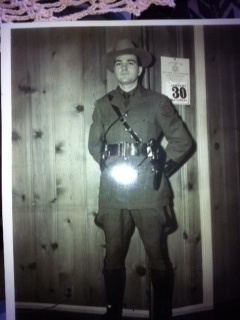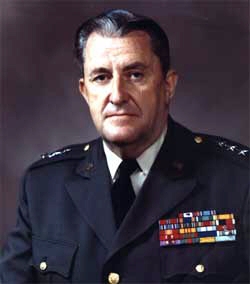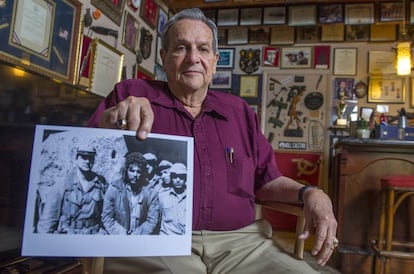
On May 26, The New York Times Magazine ran a feature story by Matthieu Aikins entitled “America’s Monster: Uncovering the Brutal Career of Abdul Raziq—And the Hidden Truths of the War in Afghanistan.”
The story detailed the U.S. military and CIA’s support for Abdul Raziq, a police commander in Spin Boldak on the border of Pakistan in the late 2000s who, thanks to American patronage, was promoted to police chief in Kandahar and rose to the rank of three-star General.
In the years prior to his death at the hands of the Taliban in 2018, Raziq’s photo proliferated on taxis and at checkpoints across Afghanistan as a hero in spearheading the fight against terrorism.
However, Raziq’s men carried out Afghanistan’s largest campaign of forced disappearances since the pro-communist coup of 1978, torturing captives and burying many of them in the Afghan desert.
Aikins wrote that “the scale of Raziq’s abuses, carried out with American support, was shocking.”[1]
After Raziq became Kandahar’s police chief, UN investigators documented the beating and administration of electric shock to detainees and the “twisting and wrenching of genitals.”[2]


Many of the abuses were carried out as part of a clan war in which the U.S. military and CIA became enmeshed. Raziq was a member of Achakzai tribe whose father had been murdered by the rival Noorzai tribe, which had collaborated with the CIA during the 1980s Soviet war.
When Raziq’s brother was gunned down in the bazaar in Chaman by a Noorzai, Raziq kidnapped the suspected culprit and 13 people he was traveling with and shot them all in a dry riverbed.
Summoned to Kabul, Raziq was afterwards pardoned by Afghan President (and U.S. puppet) Hamid Karzai. Blackwater and DynCorp subsequently helped transform Raziq’s Achakzai militia into a border police regiment whose salaries were paid for by the United States.

Heading a special Achakzai battalion in the border police, Raziq’s cousin, Jajo, ran death squads in a Noorzai area. His men had detective badges and guns and “threw the bodies in the desert,” according to Aikins.[3]
Plain-clothes teams would roam in cars with tinted windows, snatching suspects and taking them for “a sand picnic.”[4]
The desert wells and dunes contained countless corpses; others were dumped in the streets.
Dr. Musa Gharibnawaz, who oversaw Kandahar’s morgue as the director of forensic medicine, told Aikins: “I saw things which made me wonder whether a wild beast or man had done them.”[5]
To fund death squad operations, Razik sold drugs. A Drug Enforcement Administration (DEA)-led Afghan army unit seized an enormous stockpile of hashish in Spin Boldak and arrested a district police commander who ran narcotics shipments for Raziq.
There were plans to go after Raziq next. However, U.S. army officers intervened to protect him. The CIA considered him to be a valuable source in collecting intelligence on Taliban havens and bomb-making networks in Pakistan and for providing security in border areas.
A declassified military report from 2010 noted that Raziq was giving shelter to Baloch rebels fighting the Pakistani government and that he “used these tribesmen to carry out assassinations and killings in Pakistan [which the Agency valued].”
James “Jamie” Hayes, a Special Forces Lieutenant Colonel served as a personal adviser to Raziq to plan a military operation with him in Kandahar City.
In March 2010, U.S. commanding General Stanley McChrystal posed before television cameras beside Raziq, stating that he would help the U.S. military to “increase efficiency and decrease corruption.”[6] In reality, the opposite was true, as Raziq’s forces carried out gratuitous violence, often against clan rivals, and he was deeply corrupt.


Fitting a Wider Pattern
Sadly, the CIA’s support for the Afghan monster, Abdul Raziq, fits a deep historical pattern.
Brutal figures like Raziq are valued by the U.S. military and policy elites because they do the dirty work in stamping out opposition to U.S.-imposed leaders for a relatively cheap fee.
The U.S. military and CIA can in turn claim plausible deniability when abuses get out of hand and are publicly exposed, with the abuses blamed on “rogue cowboys” or “uncivilized natives.”
Below are some of the U.S. allies also trained under police training programs who, like Raziq, were monsters:
1 – Nguyen Ngoc Loan, Vietnam War
Nguyen Ngoc Loan was the Saigon police chief during the height of the Vietnam War. He gained infamy when he was photographed shooting a National Liberation Front (NLF, southern-based guerrilla revolutionary movement known as Vietcong) prisoner in the head.

Trained by the French at Saint-Cyr Military Academy, Loan was the power-broker for South Vietnamese Vice Premier Nguyen Cao Ky, an admirer of Adolf Hitler who was previously removed from a CIA mission for smuggling drugs.

Loan had been trained by CIA advisers working under the cover of the United States Agency for International Development (USAID) Office of Public Safety (OPS).
One of the advisers, John Manopoli, had worked for undercover “red squads” in the New York State Police. He went on to train police agents in the Democratic Republic of Congo (DRC) who helped stamp out opposition to Joseph Mobutu, a tyrant who sold off his country’s mineral wealth to American investors.[7]

Loan’s role in shooting the VC prisoner in the head was no anomaly: An OPS report pointed to Loan’s “contempt for individual legal rights” after he had a member of South Vietnam’s constituent assembly assassinated to break a legislative logjam.[8]
Marine General William Corson wrote in The Betrayal that “Loan’s National police methods to enforce ‘the laws’ make Himmler’s Gestapo look like the board of overseers in a Quaker church.”[9]

2 – Siho Lamphouthacoul, Secret War in Laos
Beginning in the mid-1950s, the CIA had tried to prop up a right-wing Lao government and financed the Lao police force in an attempt to dismantle the left-wing Pathet Lao.
The head of the Lao police in the early 1960s was General Siho Lamphouthacoul, an extreme right winger, according to The New York Times, who had been trained under USAID police training programs.
Under right-wing CIA favorite General Phoumi Nosavan, Siho headed an assassination program which was designed to eliminate the higher cadres of the Pathet Lao and progressive neutralist politicians like Quinim Pholsema, whose assassination Siho arranged.


General Siho was a CIA “asset” who had played a vital role in rigging the 1960 election on General Phoumi’s behalf. A stocky man of mixed Chinese-Laotian parentage and humble background, Siho had attended the General Staff School in Taiwan, where he fell under the influence of General Chiang Ching-kuo, chief of Taiwan’s secret police and eldest son of dictator Chiang Kai-shek (Jiang Jieshi), who had close ties to American intelligence.

Described by The New York Times as “rough and tenacious,” and by his CIA case officer as “vain” and “dangerous” [like Phoumi] if in a flash of hot temper,” Siho was known for use of “gangster methods to eliminate the opposition,” including, according to U.S. reports, “the use of twisted cord in interrogating recalcitrant subjects.”[10] His men abused their power, extorted money, were involved in gambling and prostitution, and conducted themselves, in the words of one of Phoumi’s supporters, “in an absolutely irresponsible manner.”[11]
A 1965 USAID OPS report authored by Frank Walton, Paul Skuse and Wendell Motter stated that General Siho and Phoumi had used the Laotian police as a “private army” and raised money through “considerable traffic and smuggling into Thailand” as a means of “raising money for a wave of repression against political opponents,” including “mass jailings and executions.”[12]

Siho’s men, according to the report, like Raziq’s decades later, engaged in “Gestapo-like tactics, carrying out operations that “rivaled anything ever heard of in terms of brutal, corrupt activity.”[13]
3 – “Tiger Kim” Chong-Won, South Korea
In 1956, following staged elections that secured the re-election of Syngman Rhee, a U.S. client who had triggered the Korean War and massacred tens of thousands of his own people, The Korea Times reported on the arrest and beating of a member of parliament named Kim Sun-Tae.
Kim Chong-Won, head of South Korea’s public security bureau, who worked closely with Captain Warren S. Olin, a career army officer, had ordered his troops to “nab the bastard” and kept him in detention for five days, during which time he was “treated like a dog.”
The Korea Times editorialized: “There can never be a representative democracy with men like Lee and Kim in positions of power.”
Born to a poor Korean family in Japan, Kim Chong-Won was trained in the 1930s in Japanese military academies, whose rigorous ideological conditioning and harsh, dehumanizing methods set the course for his career.
Known as the “Paektu Mountain Tiger,” Kim decapitated suspected guerrilla collaborators during the suppression of the late 1940s Yosu rebellion against Rhee with a Japanese-style sword and machine-gunned 31 detainees in the Yongdok police station.
In Yonghaemyon, Kim’s men arrested civilians after finding propaganda leaflets at a nearby school and shot them in front of villagers, opening fire on women and children who ran from the scene. More than 500 were killed in the massacre, for which Kim was sentenced to three years in prison, though he was granted amnesty by Rhee.
“Tiger” Kim presided over further atrocities as vice commander of the military police in Pusan during the Korean War (1950-1953).
His appointment as head of the public security bureau was a reward for his loyalty to Rhee and reflected the U.S.-subsidized Korean National Police’s continued emphasis on counterinsurgency and utter disregard for human rights.
John Muccio, the first U.S. ambassador to South Korea, who later oversaw another dirty war in Guatemala, characterized Kim’s methods as “ruthless yet effective,” typifying U.S. support for brutal tactics, as long as they were directed against “communists” or “terrorists” in the post-Cold War era.[14]

4 – Manuel Contreras, Chile
Contreras was the head of Operation Condor in South America, a terrorist operation spearheaded by the CIA, which connected the intelligence services of South American dictatorships and collated data on leftist “subversives” who were hunted down, tortured and assassinated.
A model was the Phoenix Program in Vietnam.
Contreras headed the Chilean intelligence services under General Augusto Pinochet who came to power in a 1973 CIA-backed coup that ousted socialist Salvador Allende.
Following the coup, Allende supporters were rounded up and tortured and/or murdered. Contreras worked closely with CIA operative Vernon Walters under General Pinochet.


The Chilean intelligence service was organized along lines similar to the intelligence services of 1950s Cuban dictator Fulgencio Batista.
In 1993, Contreras was convicted of the murder of Chilean diplomat Orlando Letelier in a car bombing in Washington, D.C., and sentenced to seven years in prison.

Other notable monsters trained by the CIA (and/or U.S. military Special Forces)
1 – Dai Li: Nationalist Chinese intelligence chief in the 1940s, tied to the Green Gang, who was referred to by his own OSS contact as a “Chinese Himmler.”

2 – Ahmed Wali Karzai: Afghan drug smuggler and murderer who was the brother of U.S. puppet Hamid Karzai. The New Yorker referred to him as an “Afghan Godfather.”

3 – Ayad Allawi, Iraq: Allegedly a British MI-6 asset since 1978, he personally oversaw torture as head of the new Iraqi government after the overthrow of Saddam Hussein. Even when he was a student, Allawi was a thug. His classmates said that, when he entered the handball court, they left because they were scared of him.

4 – Joseph Mobutu: A notorious Congolese dictator.

5 – Paul Kagame: Rwandan dictator considered to be an African Hitler.

6 – General Gustavo Álvarez Martínez: Honduran death squad operator in the 1980s who worked directly with U.S. Ambassador John Negroponte and was a graduate of the U.S. Army Special Warfare School at Fort Bragg.

7 – General Napoleon Valeriano: Notable killer of left-wing Huks in the Philippines in the 1950s who was then brought by his CIA godfather Edward Lansdale to spearhead an anti-communist campaign in support of the Ngo Dinh Diem quisling regime in South Vietnam that helped trigger the Vietnam War.

8 – Félix Rodríguez: Murderer of Che Guevara who was also involved in the training of the Nicaraguan Contras in the 1980s. Rodriguez carried out some of the latter operations during the governorship of Bill Clinton in Arkansas (Clinton was himself a CIA asset). Rodriguez was so close to Clinton, he had special access to the governor’s mansion.

9 – Orlando Bosch: Cuban terrorist who blew up a Cuban airliner, killing all 73 passengers.

10 – Phao Siyanon: Thai Police Director-General trained by the CIA in the 1950s who committed extrajudicial executions of leftists and controlled the Southeast Asian drug traffic.

Before the CIA came into existence:
1 – Anastasio Somoza García: Nicaraguan tyrant who headed U.S.-trained National Guard in the 1930s. After murdering leftist leader Augusto Cesar Sandino, Somoza established a family dynasty that ruled Nicaragua like a private fiefdom for more than 40 years.

2 – Admiral Alexander Kolchak: Counter-revolutionary general who supported pogroms against Jews and commanded Cossack generals in the Russian Civil War (1917-1920). The latter committed acts that American Colonel Robert Eichelberger said would have been considered “shameful in the Middle Ages.”

All of the above figures—from Kolchak to Raziq—have been instrumental over the last one hundred years in doing the dirty work of the American Empire. Contrary to popular illusions, this empire has been sustained by violence and massive human rights abuses, like all other empires.

-
Matthieu Aikins, “America’s Monster: Uncovering the Brutal Career of Abdul Raziq—And the Hidden Truths of the War in Afghanistan,” The New York Times Magazine, May 20, 2024, 25. ↑
-
Aikins, “America’s Monster,” 30. ↑
-
Idem. Jajo was assassinated in 2014. ↑
-
Aikins, “America’s Monster,” 30. ↑
-
Idem. ↑
-
Aikins, “America’s Monster,” 29. ↑
-
Jeremy Kuzmarov, Modernizing Repression: Police Training and Nation-Building in the American Century (Amherst, MA: University of Massachusetts Press, 2012), 149. A colleague described Manopoli as a “strange character” with odd work habits: He would disappear for days and then be seen in his office typing into the night. First serving as a police adviser in Vietnam under cover of a Michigan State University program, he also served with the OPS in Rwanda, Ivory Coast and Nicaragua, training the National Guard on the eve of the Sandinista Revolution. ↑
-
Kuzmarov, Modernizing Repression, 149. ↑
-
Idem. ↑
-
Kuzmarov, Modernizing Repression, 130, 131. ↑
-
Ibid., 131. ↑
-
Idem. ↑
-
Idem. ↑
- Jeremy Kuzmarov, “Police Training, ‘Nation-Building,’ And Political Repression In Postcolonial South Korea,” The Asia-Pacific Journal: Japan Focus, July 1, 2012, https://apjjf.org/2012/10/27/jeremy-kuzmarov/3785/article.
CovertAction Magazine is made possible by subscriptions, orders and donations from readers like you.
Blow the Whistle on U.S. Imperialism
Click the whistle and donate
When you donate to CovertAction Magazine, you are supporting investigative journalism. Your contributions go directly to supporting the development, production, editing, and dissemination of the Magazine.
CovertAction Magazine does not receive corporate or government sponsorship. Yet, we hold a steadfast commitment to providing compensation for writers, editorial and technical support. Your support helps facilitate this compensation as well as increase the caliber of this work.
Please make a donation by clicking on the donate logo above and enter the amount and your credit or debit card information.
CovertAction Institute, Inc. (CAI) is a 501(c)(3) non-profit organization and your gift is tax-deductible for federal income purposes. CAI’s tax-exempt ID number is 87-2461683.
We sincerely thank you for your support.
Disclaimer: The contents of this article are the sole responsibility of the author(s). CovertAction Institute, Inc. (CAI), including its Board of Directors (BD), Editorial Board (EB), Advisory Board (AB), staff, volunteers and its projects (including CovertAction Magazine) are not responsible for any inaccurate or incorrect statement in this article. This article also does not necessarily represent the views the BD, the EB, the AB, staff, volunteers, or any members of its projects.
Differing viewpoints: CAM publishes articles with differing viewpoints in an effort to nurture vibrant debate and thoughtful critical analysis. Feel free to comment on the articles in the comment section and/or send your letters to the Editors, which we will publish in the Letters column.
Copyrighted Material: This web site may contain copyrighted material the use of which has not always been specifically authorized by the copyright owner. As a not-for-profit charitable organization incorporated in the State of New York, we are making such material available in an effort to advance the understanding of humanity’s problems and hopefully to help find solutions for those problems. We believe this constitutes a ‘fair use’ of any such copyrighted material as provided for in section 107 of the US Copyright Law. You can read more about ‘fair use’ and US Copyright Law at the Legal Information Institute of Cornell Law School.
Republishing: CovertAction Magazine (CAM) grants permission to cross-post CAM articles on not-for-profit community internet sites as long as the source is acknowledged together with a hyperlink to the original CovertAction Magazine article. Also, kindly let us know at info@CovertActionMagazine.com. For publication of CAM articles in print or other forms including commercial internet sites, contact: info@CovertActionMagazine.com.
By using this site, you agree to these terms above.
About the Author

Jeremy Kuzmarov holds a Ph.D. in American history from Brandeis University and has taught at numerous colleges across the United States. He is regularly sought out as an expert on U.S. history and politics for radio and TV programs and co-hosts a radio show on New York Public Radio and on Progressive Radio News Network called “Uncontrolled Opposition.”
He is Managing Editor of CovertAction Magazine and is the author of six books on U.S. foreign policy, including Obama’s Unending Wars (Clarity Press, 2019), The Russians Are Coming, Again, with John Marciano (Monthly Review Press, 2018), Warmonger. How Clinton’s Malign Foreign Policy Launched the U.S. Trajectory From Bush II to Biden (Clarity Press, 2023); and with Dan Kovalik, Syria: Anatomy of Regime Change (Baraka Books, 2025).
Besides these books, Kuzmarov has published hundreds of articles and contributed to numerous edited volumes, including one in the prestigious Oxford History of Counterinsurgency .
He can be reached at jkuzmarov2@gmail.com and found on substack here.










